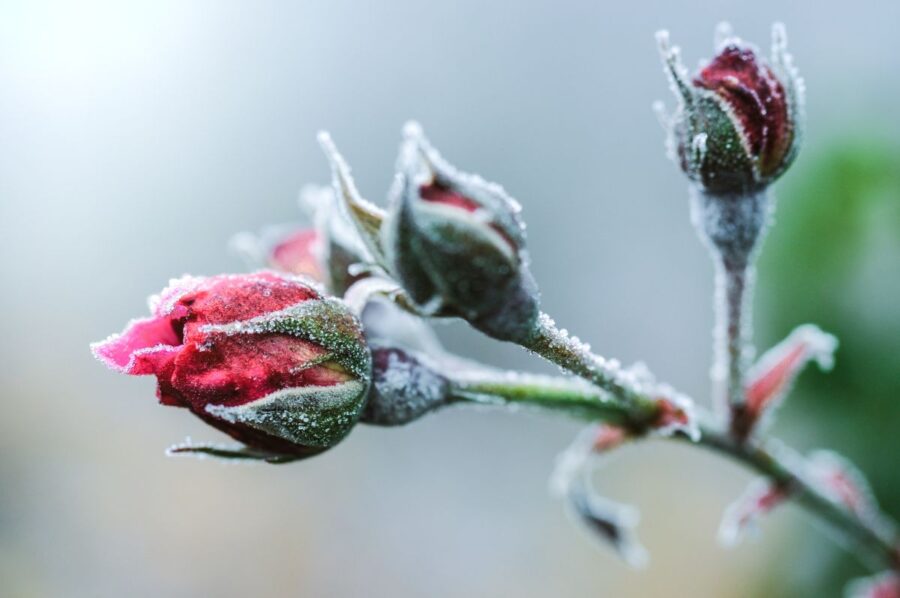Are you a rose enthusiast looking to get beautiful blooms from your rose plants? Or are you just starting out with roses and want to learn how to take care of them? Whatever your experience level may be, this guide is here to help you take care of your roses and achieve beautiful results.
Roses are known for their beauty and elegance, but they can also be delicate and high-maintenance. Taking care of roses requires dedication, patience, and knowledge of their specific needs. In this guide, we will walk you through the 3 stages of taking care of roses that will get beautiful results.
Stage 1: Planting and Preparation

The first stage in taking care of roses is planting and preparation. This stage is crucial as it sets the foundation for your rose’s growth and health.
Choosing the Right Location
The first step in planting roses is to choose the right location. Roses require at least six hours of direct sunlight each day, so make sure to choose a spot that gets ample sunlight. It’s also important to choose a location that has good drainage and air circulation.
Preparing the Soil
Once you have chosen the location, it’s time to prepare the soil. Roses require well-draining soil that is rich in organic matter. You can add compost, peat moss, or aged manure to your soil to improve its quality. It’s also important to ensure that the pH level of the soil is between 6.0 and 6.5, as roses prefer slightly acidic soil.
Planting the Roses
After preparing the soil, it’s time to plant the roses. Dig a hole that is twice as wide and deep as the root ball of the rose plant. Place the rose in the hole and fill it with soil, making sure to tamp it down firmly. Water the plant thoroughly to settle the soil.
Stage 2: Maintenance

Once your roses are planted, it’s time to move on to the maintenance stage. This stage involves caring for your roses on a regular basis to ensure their health and beauty.
Watering
Roses require regular watering to thrive. It’s important to water your roses deeply, at least once a week, to encourage deep root growth. You can also use a soaker hose or drip irrigation system to ensure that the water reaches the roots without getting the leaves wet, as wet leaves can lead to fungal diseases.
Fertilizing
Fertilizing your roses is another important aspect of maintenance. Roses require regular feeding to encourage healthy growth and blooms. You can use a balanced fertilizer, such as 10-10-10, or a rose-specific fertilizer. Be sure to follow the instructions on the package for the correct amount and frequency of application.
Pruning
Pruning your roses is essential for maintaining their shape and health. Pruning helps to remove dead, diseased, or damaged wood, as well as promote new growth and blooms. You should prune your roses in the spring, after the last frost, and again in the fall, after the last blooms have faded.
Pest and Disease Control
Roses are prone to pests and diseases, so it’s important to keep an eye out for any signs of trouble. Common pests include aphids, thrips, and spider mites, while common diseases include black spots and powdery mildew. You can use organic or chemical controls to manage pests and diseases or prevent them altogether by choosing disease-resistant rose varieties.
Stage 3: Winter Care

The final stage in taking care of roses is winter care. This stage is crucial as it prepares your roses for the cold winter months and ensures that they survive and thrive in the spring.
Mulching
Mulching is an important part of winter care for roses. A layer of mulch around the base of your rose plants helps to insulate the roots and protect them from the cold. You can use organic materials such as shredded leaves, straw, or wood chips for mulch.
Pruning
Pruning your roses in the fall is also important for winter care. This helps to remove any dead, diseased, or damaged wood that can attract pests and diseases over the winter. It’s also a good idea to prune your roses to a height of around 3 feet to prevent damage from heavy snow or ice.
Wrapping
In areas with harsh winter weather, wrapping your roses can provide additional protection. You can use burlap or other breathable fabric to wrap the canes and protect them from freezing temperatures and wind damage.
FAQs
1. How often should I water my roses?
Roses should be watered deeply at least once a week or more frequently in hot, dry weather.
2. What kind of fertilizer should I use on my roses?
You can use a balanced fertilizer, such as 10-10-10, or a rose-specific fertilizer. Follow the instructions on the package for the correct amount and frequency of application.
3. When is the best time to prune my roses?
Prune your roses in the spring, after the last frost, and again in the fall, after the last blooms have faded.
4. How can I prevent pests and diseases on my roses?
You can use organic or chemical controls to manage pests and diseases or prevent them altogether by choosing disease-resistant rose varieties.
5. How do I prepare my roses for winter?
Mulching, pruning, and wrapping are important steps in preparing your roses for winter.
6. How can I encourage my roses to produce more blooms?
Regular watering, fertilizing, and pruning can all encourage your roses to produce more blooms.
Conclusion
Taking care of roses can be a rewarding but challenging task. By following the three stages in taking care of roses that will get beautiful results, you can ensure that your roses thrive and produce beautiful blooms year after year. Remember to choose the right location and prepare the soil when planting, maintain your roses through regular watering, fertilizing, and pruning, and protect them during the winter months. With these tips, you can enjoy the beauty of your roses for years to come.
Also read: Small Greenhouse: Make It Easy!

